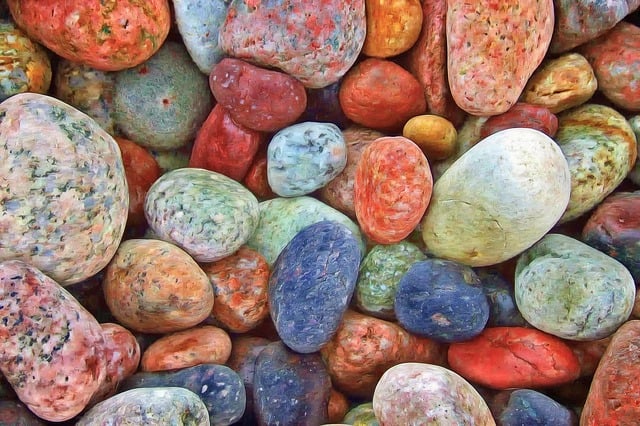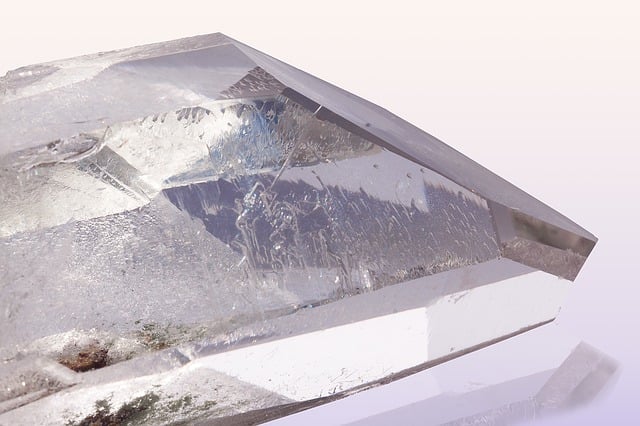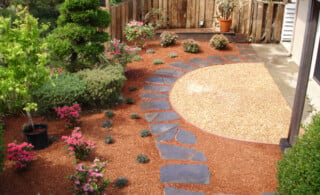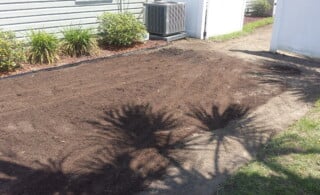If you find rocks interesting, you might like to try rock collecting to help you learn more about rocks and minerals. In fact, you could even learn facts about geology as you search around your (home) to add rocks to your collection. Geologists study the physical and chemical changes that led to the way Earth is today. Explore rocks, soil, sand, and water around you and you might even find unusual and rare rocks and minerals to collect.
Rocks
The Earth is made out of many different types of rocks and minerals. Rocks are continually evolving and changing; they don’t stay the same over long periods of time. As the wind blows or water runs over rocks, they become worn down and pieces of them blow or wash away to gather in other places. Scientists separate rocks into three different types, which are igneous, sedimentary, and metamorphic. Igneous rocks form when melted rock cools and becomes hard again. Sedimentary rocks have layers of sediment that build up over time to form the rocks. Metamorphic rocks are the rocks that form after high pressure or heat changes other rocks.
- How Rocks and Minerals Are Formed
- Pictures of Igneous, Metamorphic, and Sedimentary Rocks
- Overview of Granite
- How Can You Tell Rocks Apart? (PDF)
- Obsidian Is Hot Stuff
- Classifying Rocks: How Can We Identify Them? (PDF)
- What Are Rocks?
- Overview of Rocks
- Rock and the Rock Cycle
- Types of Rock
Minerals
Minerals come from the ground. Different kinds of plants contain minerals, and these minerals come from the soil in which the plants grow. Water can also contain minerals, depending on where it is on or inside the earth. Minerals come in many different densities, colors, and levels of hardness. Minerals may be magnetic, or they can even be radioactive. Feldspar and quartz are the two most common minerals that occur in Earth’s crust.
- Basic Mineral Identification
- Mineral Collecting
- A Collector’s Guide to Maine Minerals
- Recreational Mineral Collecting
- Rocks and Minerals (PDF)
- Mineral Information
- Common Minerals
- Characteristics of Minerals and Gems
- What Is a Mineral?
- Mineral Identification Worksheet
- Mineral Spectroscopy
Advice and Tips for Beginners
Anyone who enjoys exploring rocks might like to start a rock collection. Rock collectors are often called “rock hounds” because they search and scour the earth looking for different kinds of rocks to add to their collections. Finding unusual and rare rocks is a special thing for rock collectors. The first place you might search for rocks is right around your home. You might be surprised at the interesting rocks you can find right in your own backyard. Exploring quarries and construction sites can also be great for finding unusual rocks because machinery has often uncovered rocks that were buried deep below the surface. If you do visit a quarry or construction site, always go with an adult to make sure you stay safe. A geologist’s hammer and magnifying glass are helpful tools for a rock hound. Once you find rocks you want to take home, you might want to wrap them in tissue paper and label them with a marker so you remember where you found them. At home, wash your rocks gently, clean them with a soft brush, and store them in egg cartons or other shallow boxes.
- Collecting Rocks
- Tips for Collecting Rocks (PDF)
- Rock and Ore Collections
- Frequently Asked Questions About Rocks and Minerals
- Rock Collecting (PDF)
- Collect and Identify Rocks
- Rocks and Minerals
- How to Start a Rock Collection
- Why Collect Rocks?
- Starting a Rock Collection
Geology
Geology is the study of Earth, including what it’s made of, how it was formed, and how it has changed over time. Scientists estimate that the world is more than 4.5 billion years old. Because Earth is made out of rocks, a big part of geology involves studying rocks. You could do a lot of work that is similar to the work done by geologists if you collect rocks. You might even use many of the same tools, such as a rock hammer, a magnifying glass, a compass, and a notebook for recording your finds.
- What Tools Do Geologists Use?
- What Is Geology?
- What Do Geologists Do?
- What Is a Geologist?
- Identify Rock Types Game
- The Rock Cycle Diagram
- What Geologists Do
- Geology Games and Activities
- Freeze! You’re It! Game of Rock Cycle Tag



 Raising Chickens at Home
Raising Chickens at Home  Spring Garden Flower Tips and Suggestions
Spring Garden Flower Tips and Suggestions  Plan Ahead for a Better Yard
Plan Ahead for a Better Yard  Dry Well Cleaning & Maintenance Tips
Dry Well Cleaning & Maintenance Tips  Soil Engineers & Testing
Soil Engineers & Testing 

Are You Familiar With This Topic? Share Your Experience.